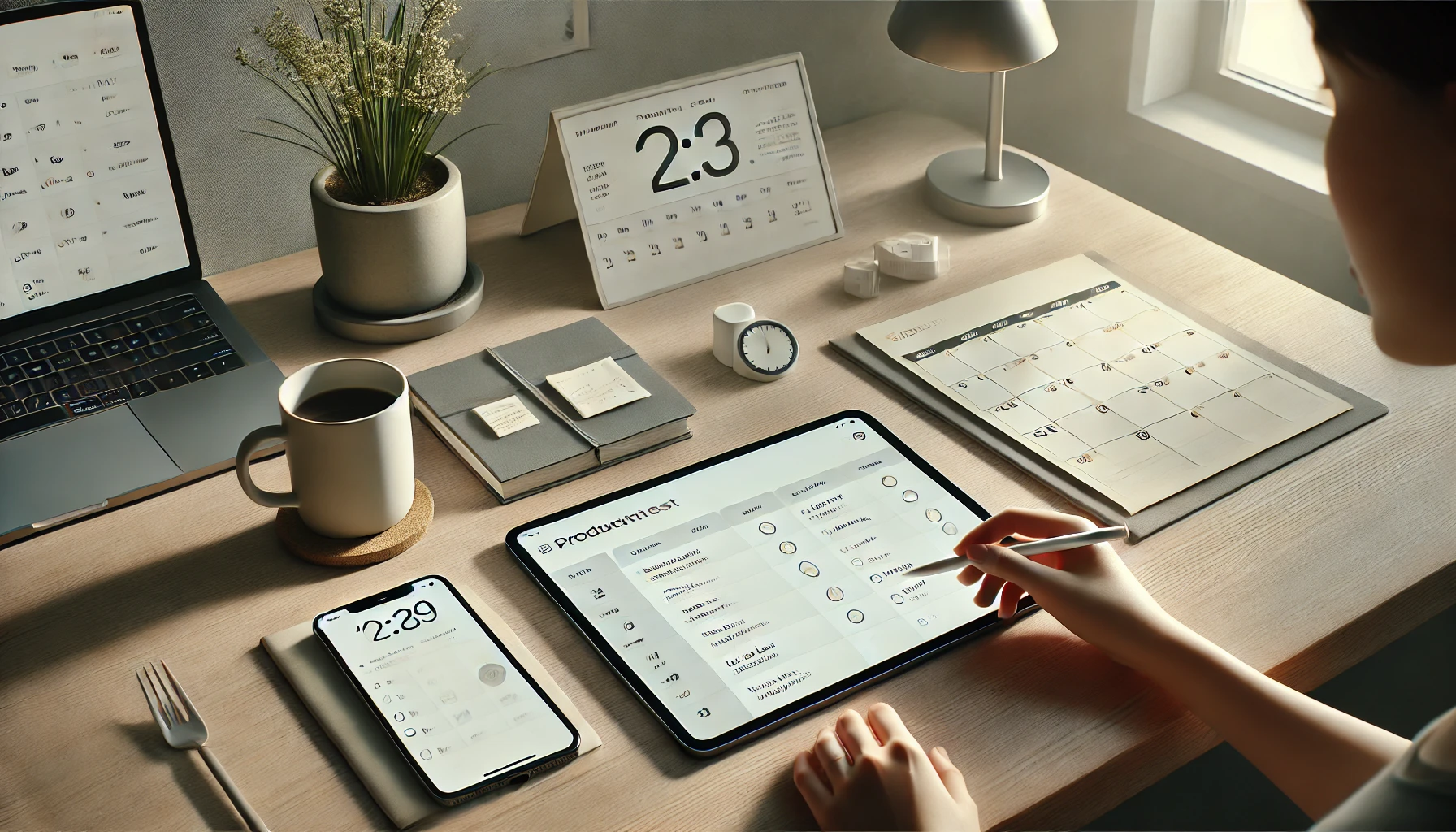Having a productivity system doesn’t mean your life needs to be perfectly organized or packed with to-do lists. In fact, the best systems are the simplest—built to support your goals, energy levels, and lifestyle.
Let’s break down how you can build a personal productivity system that actually works (and lasts).
What Is a Productivity System?
A productivity system is a repeatable method that helps you manage your time, energy, and focus so you can get things done consistently without burning out.
It’s not about being perfect. It’s about working with intention and reducing the mental load that comes from chaos and disorganization.
Why Simple Systems Work Best
Complicated productivity systems often fall apart because they take too much effort to maintain. A simple system, on the other hand, becomes part of your daily rhythm and adjusts with your life.
Benefits of Keeping It Simple:
- Easier to maintain
- Reduces decision fatigue
- Flexible during busy or slow seasons
- Builds long-term consistency
Now, let’s walk through how to build yours in a few easy steps.
Step 1: Choose a Capture Method for Your Tasks
Your brain is for thinking—not storing information. You need a “capture system” where every task, idea, or commitment gets recorded.
Options:
- A paper notebook
- Notes app on your phone
- Task manager app like Todoist, Notion, or Things
- Whiteboard in your workspace
The key: Write things down the moment they come to mind.
Step 2: Set Weekly and Daily Intentions
Every week, look at your upcoming responsibilities and set 3–5 key goals. Then, each day, pick 1–3 main tasks to focus on.
Daily Planning Routine (5–10 min):
- Review your task list
- Choose your top priorities
- Block out time for each task
- Leave buffer time for flexibility
A clear plan helps you move with purpose instead of reacting to the day.
Step 3: Block Time for Deep Work
Deep work is the kind of focused effort that moves the needle. You need to protect space for it, free of distractions.
Tips:
- Block 1–2 hours in the morning (your peak focus time)
- Turn off notifications
- Use a Pomodoro timer (25/5 method)
- Avoid multitasking
Even just one solid hour of deep work a day can lead to powerful results.
Step 4: Organize Your Workflow
Group your tasks by category so you can handle similar types of work together.
Example Categories:
- Admin (emails, scheduling)
- Creative (writing, designing)
- Meetings and calls
- Learning or research
- Errands or personal tasks
Batched tasks reduce mental switching and help you stay in the zone longer.
Step 5: Build Habits Around Your System
A productivity system works best when it’s part of your routine—not something you only use when you’re overwhelmed.
Anchor it to existing habits:
- Plan your day after brushing your teeth
- Review your tasks after lunch
- Do a weekly reset every Sunday evening
The more natural it becomes, the more powerful it gets.
Step 6: Use One Tool (Or a Few Simple Ones)
You don’t need 10 productivity apps. In fact, having too many tools creates confusion and friction. Choose one main system and stick to it.
Best Combo for Simplicity:
- Calendar (Google Calendar or Apple Calendar)
- Notes app or task list
- Timer (Focus Keeper, Pomofocus, or your phone’s clock)
If you like digital systems, Notion or Trello can combine many of these functions in one place.
Step 7: Reflect and Adjust Weekly
Take 10–15 minutes each week to reflect on what worked, what didn’t, and what needs to change.
Weekly Reflection Questions:
- What were my biggest wins this week?
- What distracted me or slowed me down?
- What do I want to focus on next week?
This helps you constantly improve and avoid burnout or disorganization.
Keep It Simple, Keep It Sustainable
Your productivity system should serve you, not the other way around. The goal isn’t to fill every moment with work—but to use your time with clarity and intention.
A simple system you actually use is far better than a complex one you abandon in a week. Start small, stay consistent, and adjust as you grow.
